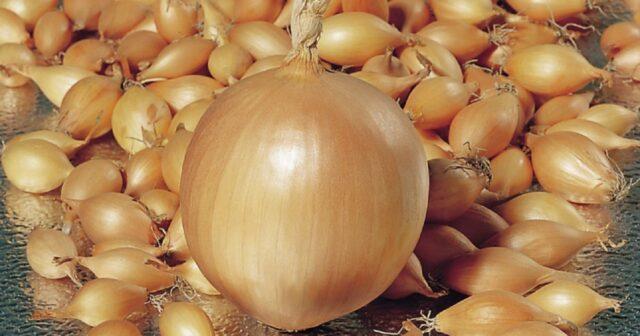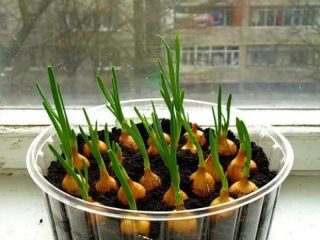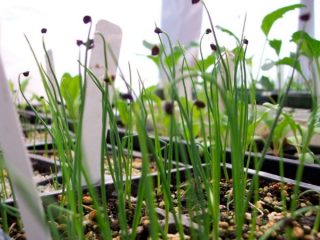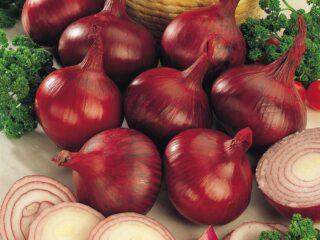Content
Onion Troy is a Dutch selection hybrid that has recently appeared on the Russian seed market. The winter variety can be planted both in spring and autumn on a small plot and farm fields. During the creation and subsequent experimental cultivation, all the shortcomings of the culture were taken into account and eliminated: Troy rarely gets sick, he is practically not affected by pests. Onions are grown only from purchased planting material.
Description and characteristics of Troy onions
In terms of chemical composition, hybrids are not inferior to crop varieties, but they are more stress-resistant. The specimens planted in the fall are not afraid of frost, they begin growing at a temperature of +50 C, rarely get sick. Due to these features, yields are increased and cultivation is simplified.
Troy was created for cultivation on a production scale. The variety has a long shelf life and high taste, bitterness is present in an insignificant amount, semi-hot onion. Under any weather conditions, it does not shoot, the plant spends all the nutrients on the ripening of the bulb.
Appearance
Externally, the Troy variety is not much different from the standard varietal representatives:
- the bulb is round, slightly elongated, the mass reaches 70-80 g, the diameter is up to 8 cm;
- the membranous structure consists of the upper dry scales of a golden or light brown color and juicy inner whites with a slight bluish tint;
- the neck is thin, short;
- leaves are tubular, dark green, with a waxy coating, few in number, up to 35–40 cm long, the structure is rigid with longitudinal fibers.
Like most of the Troy hybrids, they do not give seeds, the onions are propagated with daughter bulbs, which form a nest of buds near the bottom. Planting material is obtained using a special technology at agricultural firms specializing in this area.
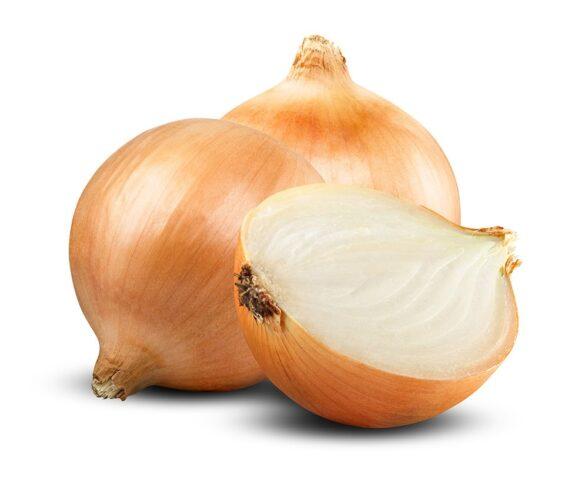
The pulp of the inner scales is juicy, semi-sharp, the taste does not change from a moisture deficit or an excess of moisture
Ripening period and yield
Troy hybrid is an early variety. When planted in spring, the crop ripens three months after sprouting. Winter grows earlier, onions are harvested in 2.5 months. In the southern regions, the harvest is obtained approximately in mid-July, in a temperate climate at the end of the same month. Ripening is determined by the state of the green mass. It turns yellow, lays down and dries. Productivity of Luca Troy with 1m2 is 5-6 kg.
Disease and pest resistance
In a sunny area with moderate humidity, the hybrid does not get sick and does not suffer from pests. Troy onion has a strong resistance to the main infections: bacteriosis, alternaria, powdery mildew, white rot and rot of the bottom, peronosporosis, leaf mosaic.
The main threat to the culture is the onion moth and the fly, but these insects do not parasitize on the Troy hybrid.
Composition and properties
The chemical composition of the onion contains:
- vitamins (flavonoid quercetin, ascorbic acid, B1,2,6, E, A, PP);
- saponins;
- Sahara;
- mucus;
- phytoncides;
- essential oils:
- malic and citric acid;
- minerals: iron, potassium, iodine;
- pectin compounds;
- glycosides.
Onions have anthelmintic, bactericidal, diuretic properties. Stimulates the production of gastric secretions, which normalizes the functionality of the digestive system. Recommended for diabetes mellitus. Participates in hematopoiesis and metabolic processes.
Application
Most often, Troy onions are used in cooking. It is added to salads, fried and boiled. This vegetable is indispensable for flavoring a variety of dishes. Onions are included in many recipes for preserving vegetables for the winter. It is added to semi-finished products: dumplings, dumplings, cutlets. Used for the preparation of sausages.
Onions are used for the production of a medical preparation with antimicrobial action "Allilchep", indicated for dysbiosis, intestinal atony. Allylglycer is also produced for the treatment of colpitis of Trichomonas genesis.
Onions are used in cosmetology to whiten the face and remove freckles. Helps with seborrhea, strengthens hair follicles, prevents skin flaking.
Growing regions
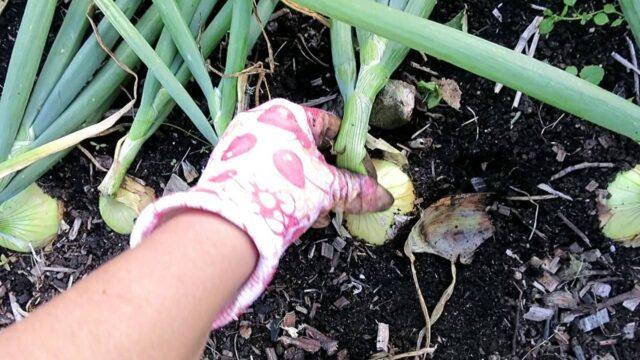
Troy onion is a cold-resistant plant, calmly withstands spring frosts
Seedlings in the initial phase may die at a temperature of + 2–40 C. In regions with a temperate continental climate, it is recommended to cover the bed at night.
When the leaves are formed, the onion is not afraid of lowering the temperature to -4-70 C. The optimal indicator for the growing season 15-250 C. If the watering regime is observed, it grows well at +350 C. Troy entered the State Register in 2008 with recommendations for cultivation in the Central regions. This variety can be cultivated throughout Russia, except for the Far North.
Advantages and disadvantages
Advantages of the Troy bow:
- consistently high yield, regardless of weather conditions;
- cold resistance;
- suitable for industrial cultivation (mechanized harvesting is possible);
- stress tolerance;
- strong immunity;
- early maturation;
- high nutritional value;
- versatility in use;
- simple agricultural technology;
- no arrows.
The disadvantages include the impossibility of independent reproduction and the high cost of planting material.
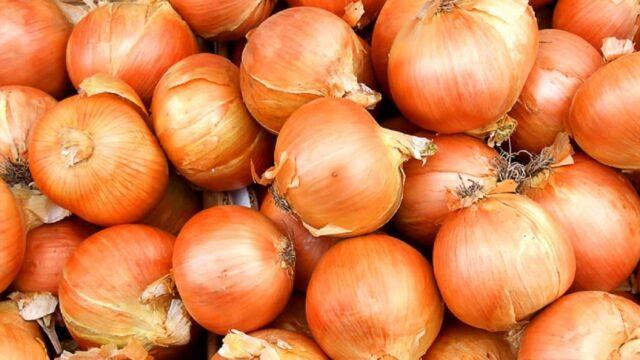
The hybrid is grown only for bulbs, Troy greens are not used
Features of planting Troy onions
In relation to light, the variety is quite demanding, it will not develop normally in the shade. The Troy onion bed is set aside only on dry, fertile soil with a neutral reaction.
You can plant Troy before winter or in spring, before placing on the garden the seeds are cut to the shoulders to speed up germination, and soaked in the Energen stimulator.
Planting Troy onions before winter
Sevok is planted approximately in the middle or at the end of October, depending on the regional climate:
- A week before planting, the site is dug up, the roots of weeds are removed.
- Before work, raise the bed to a height of 20 cm and disinfect with a solution containing copper oxychloride.
- Humus, wood ash (if the composition is acidic), peat, superphosphate and potassium are introduced. All substances are embedded in the soil by repeated digging.
- Form grooves with a depth of 5 cm, with an interval of 15 cm, lay out the seeds at a distance of 4 cm.
- Cover with soil and level the surface.
Before frosts, the site is mulched with peat (4 cm), in the spring the layer is removed so that it does not interfere with germination.
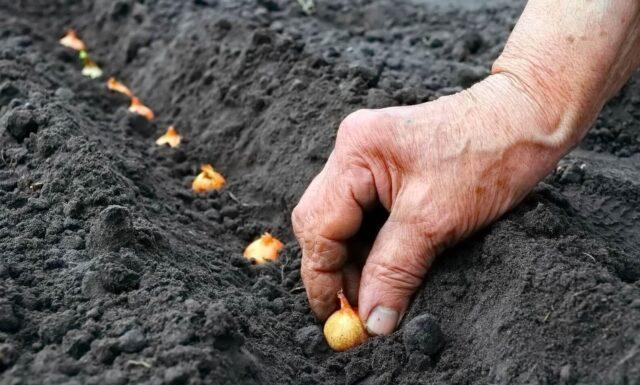
The bow is placed in the grooves with the bottom down
Planting Troy onions in the spring
In the southern regions, the culture is planted in the third decade of April; in a temperate climate, this can be done in the first half of May. The plot is prepared in the fall, dug up, weeds are removed, and abundantly sprayed with copper sulfate. After the first frosts, water-charging irrigation is carried out, in winter they cover the bed with snowdrifts.
Spring planting of Troy onions:
- The garden bed is dug up, organic matter and complex mineral fertilizer are introduced.
- Furrows are made 5 cm deep, the seeds are laid out at a distance of 8-10 cm.
- Plant onions, cover with soil with a layer of 2–2.5 cm.
The surface is leveled and watered with a solution that stimulates growth.
Troy Onion Care
The variety does not require additional agrotechnical techniques, the cultivation of Troy onions is standard for the crop:
- In May-June, onions are watered once a week with a volume of 10 l / 1m2... Watering is stopped completely 3 weeks before harvesting.
- Weed as the weeds grow.
- When the feather grows to 6 cm, they are fed with nitrogen and potassium. At the time of formation, the bulbs are fertilized with liquid organic matter, after 10 days "Agricola for Onions and Garlic" is added.
Taking into account the fact that the Troy variety is early, feeding is stopped from the second half of July.
Disease and pest control
Onion Troy does not get sick if the beds are chosen correctly, that is, in a sunny and dry area. Otherwise, rotting of the bulbs is possible; it will not be possible to save the plant. In order to prevent fungal infections, the fully formed green mass is treated with "Hom" or copper sulfate.
With constant loosening and removal of weeds, pests do not appear. For prevention, you can plant a plant with a pungent smell near the garden bed, for example, calendula.
Conclusion
Troy Onion is an early hybrid with strong immunity. It can be planted in spring and autumn. Winter crops ripen faster and are stored for more than three months. Onions are stress-resistant, with a stable yield, versatile in use. Suitable for growing throughout Russia (except for the northern regions).
Reviews of gardeners about onion Troy
